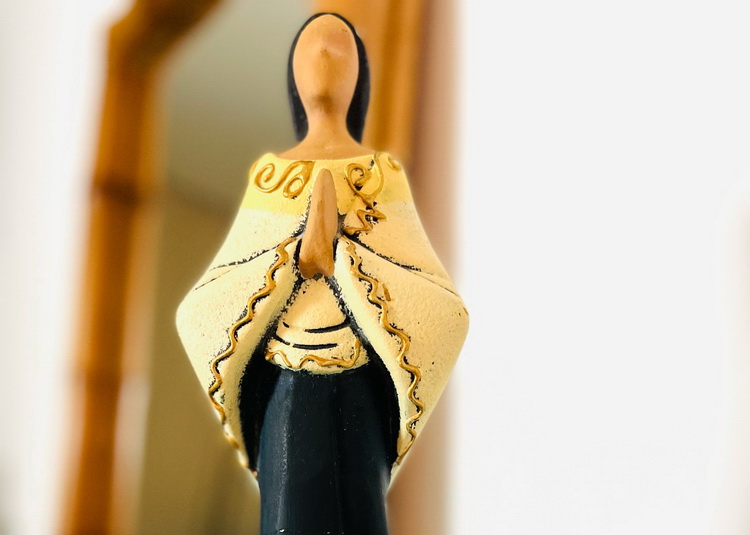I was in a store a few days ago and saw this woman, statue. It was massively discounted (4$) because it was “broken”. Someone took the time to glue all the pieces together, but of course, it wasn’t “perfect” any more; nobody wanted it. I loved it. It moved me.
The cashier told me at checkout: “I am so happy you’re buying it. This angel has been waiting for a home for a long time.”
I replied: “It’s not an angel. It’s a woman. People think she’s broken, but she’s actually very whole.”
I fell in love with this statue instantaneously because it represents ALL OF US, women and men!
At some point in time, each one of us had to collect the broken pieces of ourselves, understand them, heal them, love them, and integrate them into who we are today. I use the word broken because it’s sharp, direct, and culturally accepted, however, a better word is disconnected or lost pieces of ourselves. The process of becoming whole, or finding ourselves, is never ending. The hero’s journey is never ending, and that’s precisely the beauty of it all.
I believe that women have a harder time with “becoming whole again” as a result of centuries of shaming imposed on women, for being women. Shame is a powerful force; also very effective to control and disempower someone. Luckily, we live in a time when the need for healing has become a part of the collective consciousness. It is accepted and embraced, for the most part. Women can come together as sisters to lift each other up, inspire each other, and heal together. Women’s circles/events around femininity, yoga, dance, body image, racism, intimacy, and self-worth are a must in our lives.
This statue reminded me of Kintsugi, which comes from the Japanese Kin (gold) and Tsugi (join), and it means: join with gold. The art of Kintsugi is called Kintsukuroi, meaning “mending with gold” (or golden repair). This art form is a metaphor for life, for resiliency, for personal transformation, of course.
“Kintsugi makes something new from a broken pot, which is transformed to possess a different sort of beauty. The imperfection, the golden cracks, are what make the new object unique. They are there every time you look at it and they welcome contemplation of the object’s past and of the moment of “failure” that it and its owner has overcome. The art of kintsugi is inextricably linked to the Japanese philosophy of wabi-sabi: a worldview centred on the acceptance of transience, imperfection and the beauty found in simplicity. Wabi-sabi is also an appreciation of both natural objects and the forces of nature that remind us that nothing stays the same forever.” (fragment from https://theconversation.com/how-the-philosophy-behind-the-japanese-art-form-of-kintsugi-can-help-us-navigate-failure-193487)
To conclude, for men and women alike:
- don’t throw away your “broken” pieces; don’t hide them either;
- find your liquid gold to mend your wholeness;
- don’t allow anyone to label you as broken; walk away if that happens- not everyone is able to appreciate fine art;
- mend with gold, not copper; go deep and ask for appropriate help; it may take awhile, but it’s so worth it;
- when you do this work, your children won’t have to.
***If you are a divorced parent, or are considering divorce, please consider taking this course:
It will help you change your perspective so you can give your child the support he/she needs.
